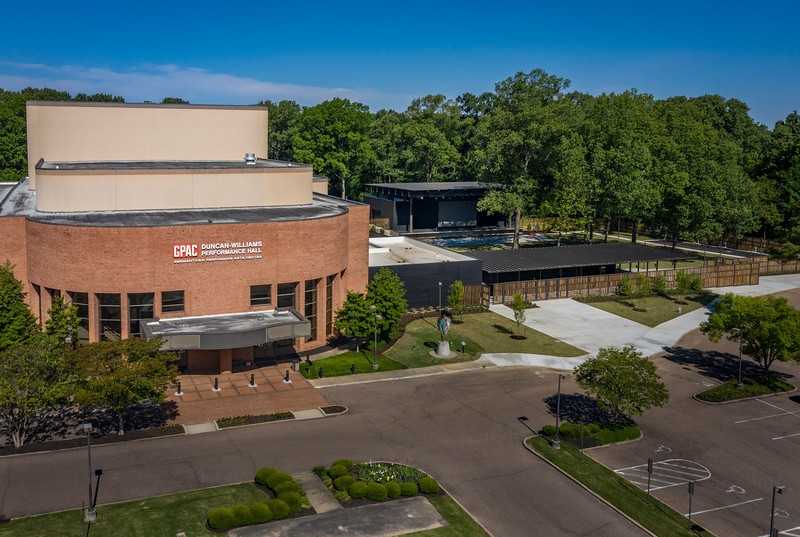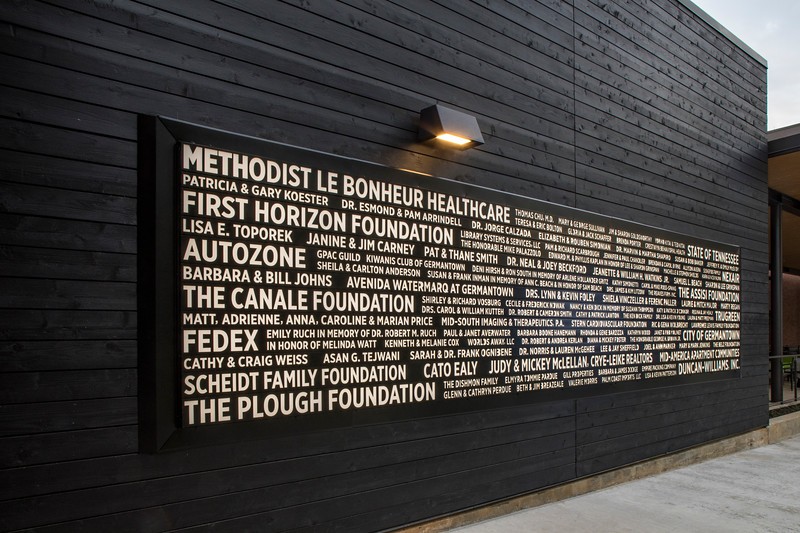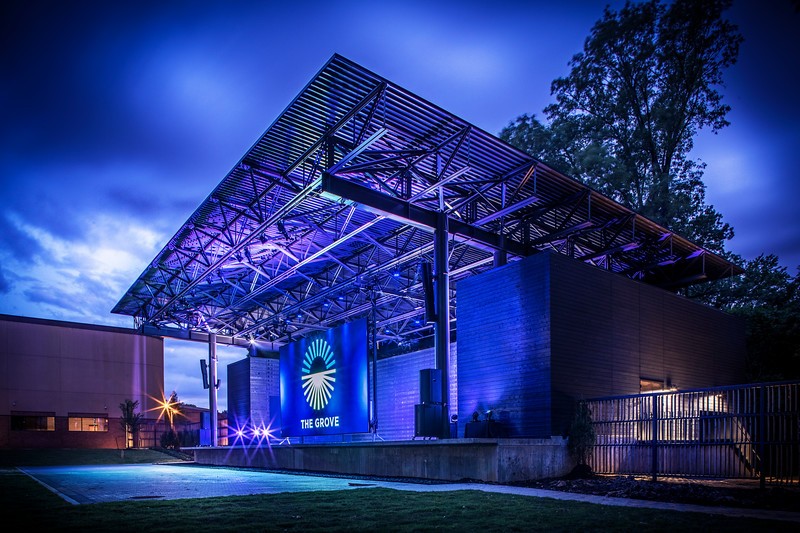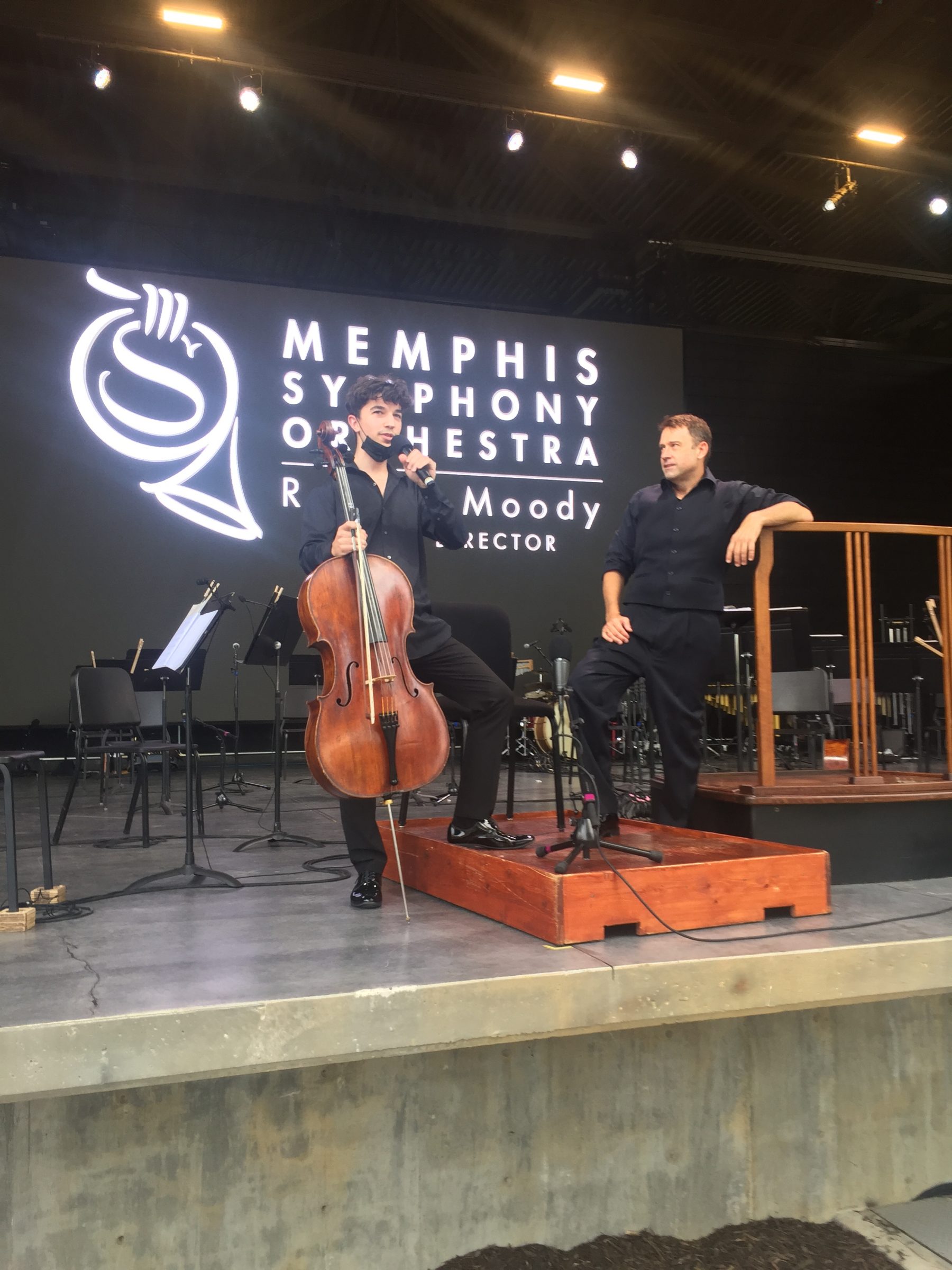 Justin Fox Burks
Justin Fox Burks
Paul Chandler, executive director of the Germantown Performing Arts Center (GPAC), has long felt there was a problem with the magnificent performance space he helps to manage. “There’s an entire segment of the community that thinks a performing arts center is not for them. That it’s for somebody else.”
That’s about to change in a big way. This week marks 
GPAC’s Paul Chandler
the completion of a new outdoor space adjacent to GPAC, known simply as The Grove. And it marks a tectonic shift in how GPAC will engage with the community, and even how the interior space, which has now hit the quarter-century mark, will be perceived. I talked to Chandler about all this recently, hoping to fill out some of the details of this long-anticipated space.
Memphis Flyer: This has obviously been in the works for a while, and you were understandably eager to open The Grove. But what does it mean to be opening up in the age of COVID-19?
Paul Chandler: The City of Germantown has been really awesome at getting information and putting a plan in place. So it’s been interesting for me, as a department head with the city, to sit in on all of those discussions, every morning at 9 a.m. It’s fascinating to hear smart, skilled people who’ve dealt with emergency management before, at a lot of high levels, and to get information from trusted sources. We’re constantly exchanging information, procedures, and survey results with them. Phase 1 of reopening allows purposeful gatherings of up to 10 people in our outdoor performance space in The Grove. So on Monday [May 18th], we will begin our “Grove Unveiling Events.” We’ll start with our board of directors. They’ll experience the video wall, not live entertainment. Then we will move toward the next group, the large contributors to The Grove. Then we will have the department heads within the city, and then subscribers. So The Grove unveiling is going to take a good period of time.
 Justin Fox Burks
Justin Fox Burks
If and when Phase 2 opens, which allows purposeful gatherings of up to 50 people, we’ll have events with that many people. And if we feel like we can handle it, then we will move toward that. We’ll move to having the general public, and by then we will have hosted several hundred people who we already know: supporters, contributors, subscribers.
This is a really important time to reinvigorate our personal relationships with our patrons. We’re going to use this time to restart in a comfortable, inviting setting with people who are comfortable with us, and we with them. And then we’ll evaluate how we’ll unveil The Grove to the general public. We won’t jump into Phase 2 until we have experimented with Phase 1. It’s different for us. It’s not like we’re inviting people to come to our venue, which we know how to operate. It’s brand-new. We’ve got to open slowly, just to make sure we operate it correctly.  Justin Fox Burks
Justin Fox Burks
Clearly live performances will be a major aspect of the outdoor stage, but what is the video component of the space, exactly?
It’s a high-definition video wall made by a company called Daktronics. They’re a global leader. They did the FedExForum scoreboard. They did the round video wall experience in the [Atlanta] Falcon’s stadium. They did the largest video wall in college football, in Auburn. So that video wall moves from the back of the stage to the front of the stage. And when it’s to the back and you turn it off, it just kind of disappears.  Justin Fox Burks
Justin Fox Burks
But it’s very large — 30 feet wide and 20 feet tall. And it does a lot of things. It’s a digital backdrop to a performance. Whether it’s musical, theatrical, even a DJ performance. It’s a digital tool that can do anything you want. And it moves forward. But we will only show performing and visual art-related content: a concert movie, or a documentary about music or performing art, or about the visual arts or artists. So, not Shrek. And then the following capabilities will be completed at the end of this month. We’ve installed six remote control cameras inside the Duncan-Williams Performance Hall that lead to a control room, and that will allow us to simulcast events in the performance hall, out into The Grove. This is a giant component to the project.
So there was a lot of work inside GPAC itself, just to prepare for The Grove.
Absolutely.
The literature about The Grove noted that there are only two other venues in the nation with such advanced video projection capabilities. How did GPAC come to be on the cutting edge?
I came from the video production world. I was a crew person, from a PA to a location scout to AD to production manager. Those were formative years for me. And I feel like that experience has a little bit to do with this, with understanding how to merge video technology with a performing arts space. It’s a merger of my careers. We were designing this Grove, and I went to a venue on the Gulf Coast called The Hub. It’s an all-purpose venue in a beach community, with food services and an AstroTurf lawn.They have this giant medium-resolution screen that you can only see at night. And it was on the upstage wall, way in the back. People enjoyed it, but you’re about 40 feet away from the screen.
The screen is deep, deep in the back of the venue. And you don’t want that barrier between the artist and the audience. So I thought, what if that wall moved forward? How would it feel? Then I went to a Chainsmokers concert at FedExForum. There are two people in the band, and they’re both DJs and singers. But there were 14 semi trucks for their tour, for two guys on stage. Because from floor to ceiling, they had video walls that were moving in all directions. There must have been 10 of these things. And they disassemble and reassemble every night.
Throughout the concert, at different times, a social media like or heart or thumbs up, would fly through the screen, connecting the kids to social media, connecting every fan to the entertainers after they’ve left the city. So that made me think about how we could utilize the video experience to interact with the audience in The Grove. Ultimately, we built ours so it could go to the upstage wall and turn off, or move forward and be a digital display.  Justin Fox Burks
Justin Fox Burks
Really active kids, who might just squirm in their seat if they were inside, can experience music in an outdoor setting where they have the freedom to move around. Maybe little Johnny will express his interest in the cello, and maybe that family will go inside next time, and get a ticket to the live performances. There’s an entire segment of the community that thinks a performing arts center is not for them. That it’s for somebody else. And I think a lot of those people would come to an outside event that’s in a beautiful place, that has food and beverages, and is safe and inviting. And they can look up and think, ‘Hey, that’s pretty awesome; what’s going on inside? Maybe I should check it out.’ We feel like we’re inviting them to our front porch.




 Justin Fox Burks
Justin Fox Burks 
 Justin Fox Burks
Justin Fox Burks  Justin Fox Burks
Justin Fox Burks  Justin Fox Burks
Justin Fox Burks  Justin Fox Burks
Justin Fox Burks